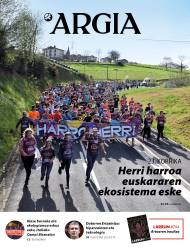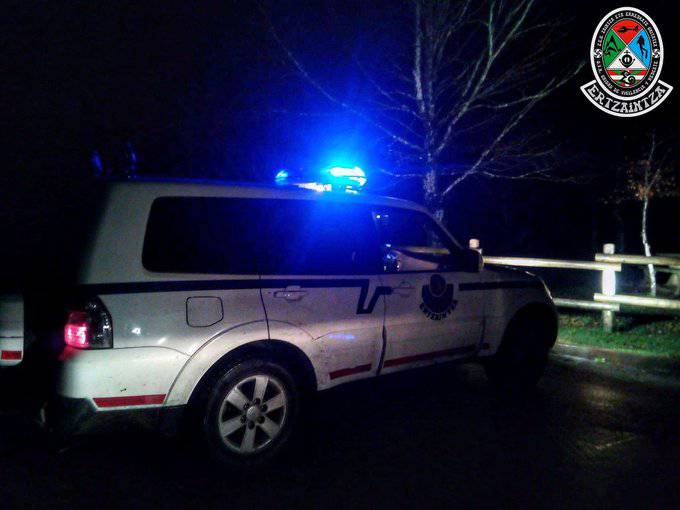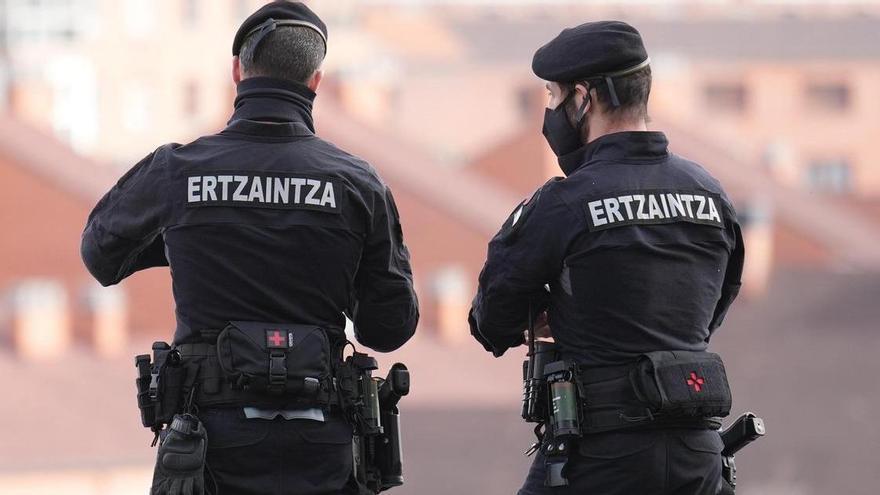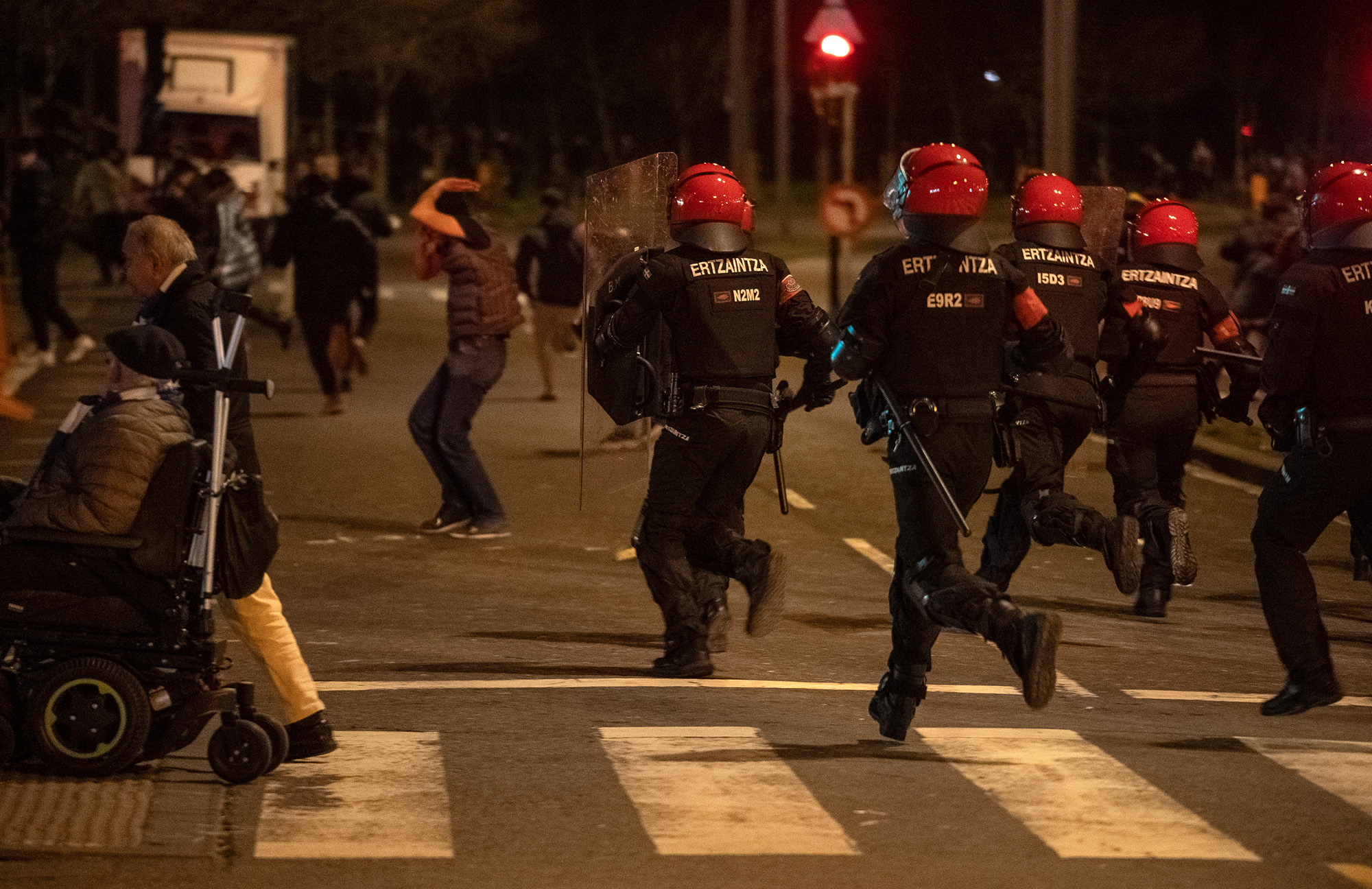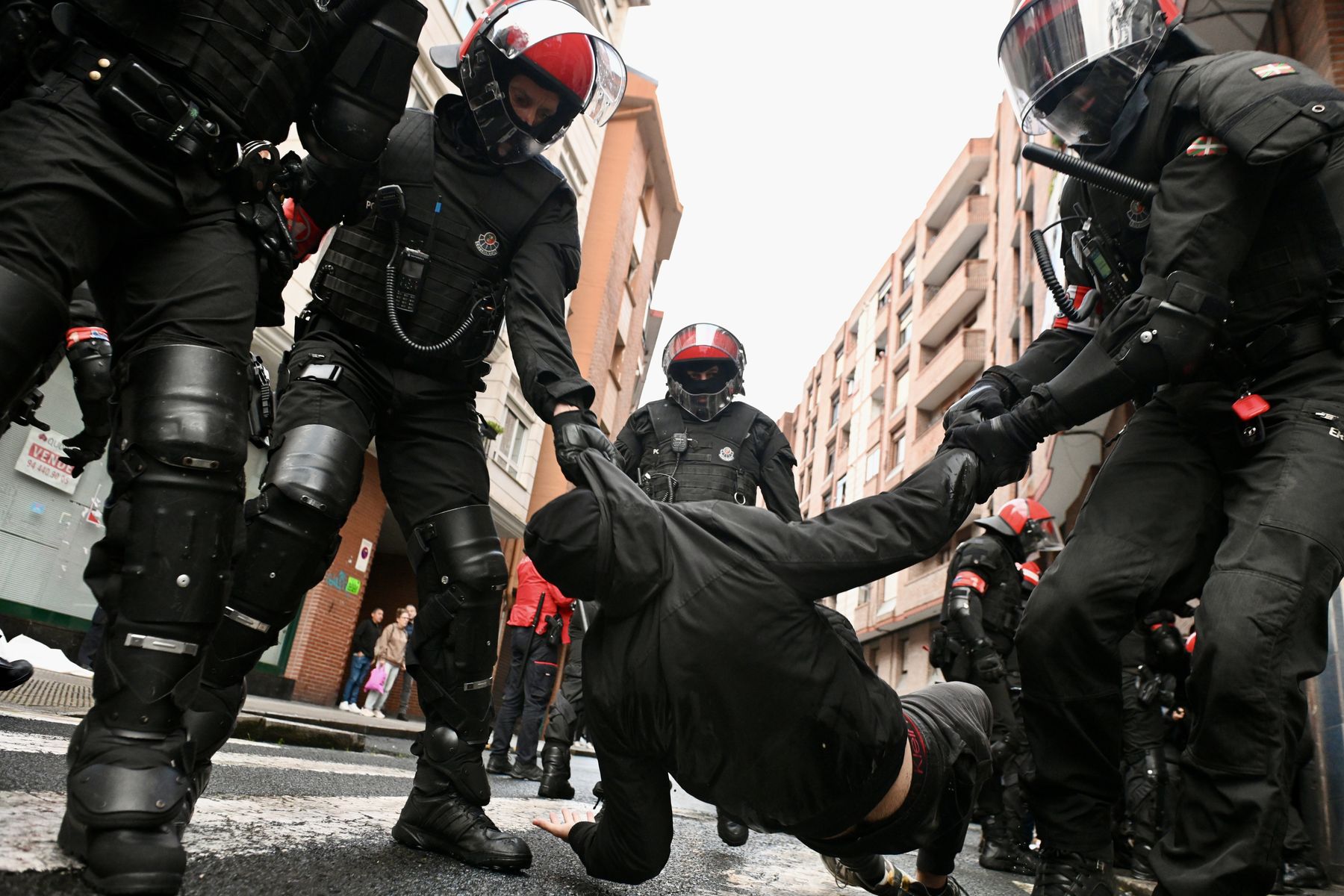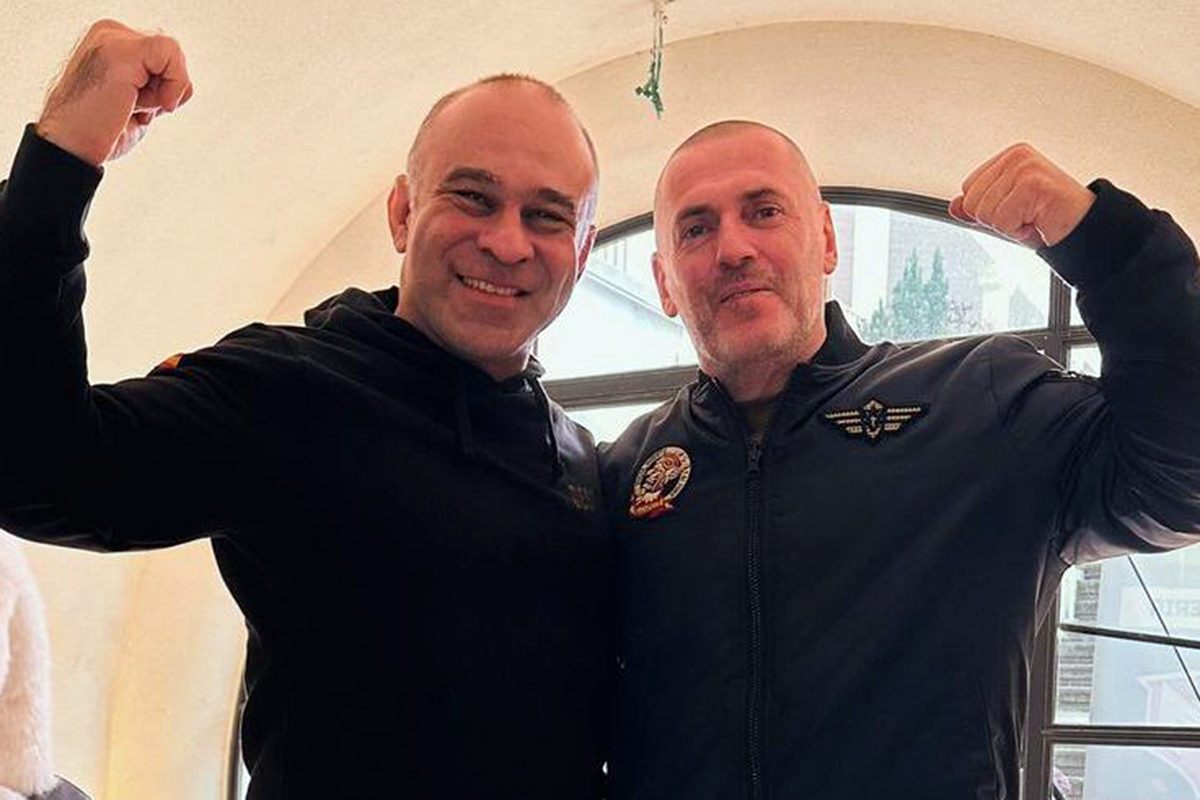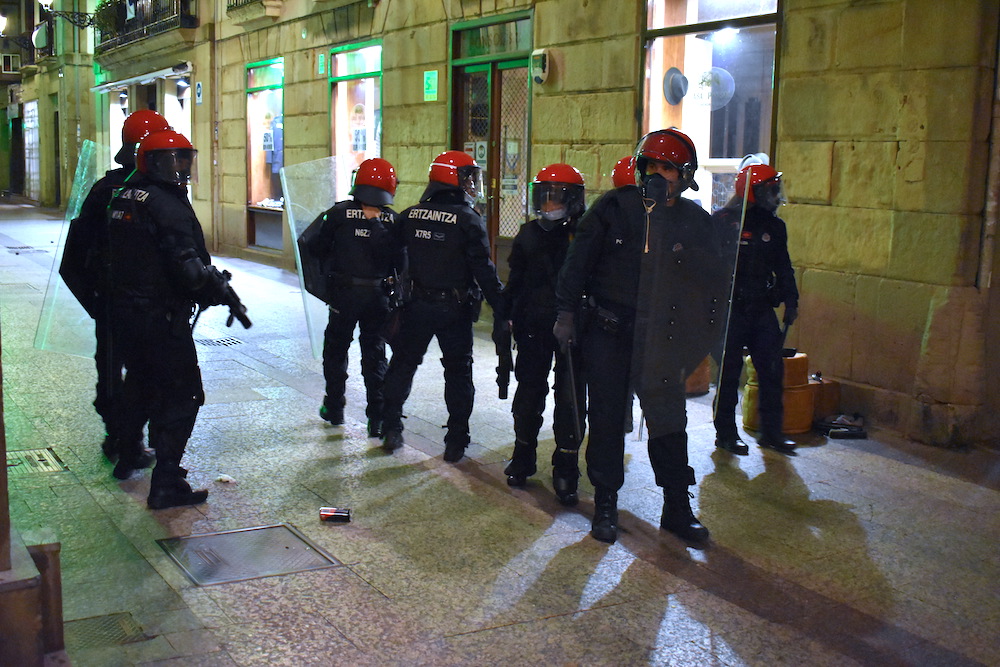Public safety has been left to private companies"
- In his new book, Ahoztar Zelaieta, research journalist, criminologist and ARGIA collaborator, analyzes the technological evolution of the Ertzaintza in the last decade. He has investigated the security industry and made public its relationship with the Ertzaintza, which is coming. Hypervigilance technology and consulting capitalism (“Upcoming Ertzaintza. Hypervigilance technology and consulting capitalism”, Txalaparta).
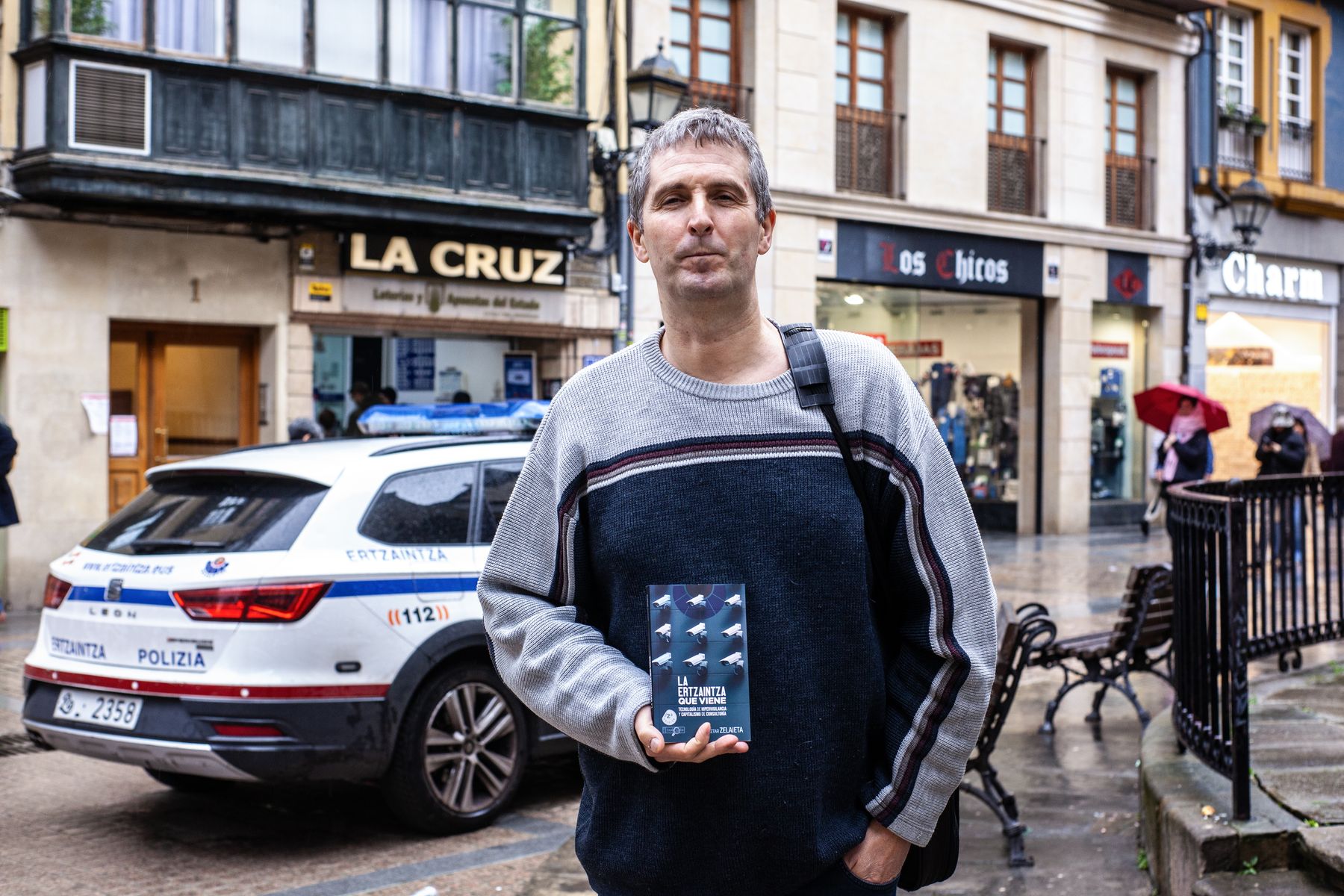
He says that in the last decade there has been a change in the Ertzaintza. In what direction? Since 2013, numerous plans and consultations have been
carried out to change the police model. I have studied contracts concluded over the last decade and the obsession with technology is clear. They have made a lot of purchases and they have spent money. I've studied which companies have a suspicious profile, what tools they make and who they've sold to. They have used these tools to attack human rights: political dissent, social minorities, migrants, etc. I have looked at the relationship between these companies and the Ertzaintza
What
are the characteristics of the new model? Mainly technification. They've made very large technology-related purchases, buying the most innovative tools possible. The evolution of communication and behavior models in society has led to obtaining the technology necessary for its surveillance. Another important feature is the lack of transparency. They don't explain who they bought or at what price. They are acquiring military technology and militarizing public security.
"The Ertzaintza can check on any phone all the calls made, all the contacts and all the conversations, even with whom we have had them."
Public-private partnership has been promoted over the past decade. Public safety has been left to private companies. Not just buying technology, but asking for advice. Private corporations are sending through agreements where the Ertzaintza should go.
He commented that a more predictive or predictive model is being adopted. What is that? They want to collect a lot of data to categorize some profiles, to surround those communities with predictive elements
that they then consider dangerous, to avoid crime, often with artificial intelligence. But to do that, you have to add a lot of data that you've bought a lot of technology to collect it. They will collect data from everyone, not just from “criminals”, which may call into question the principle of innocence. In the case of the Ertzaintza there is no information about the use being made of the technology. We have just learned that they have purchased this tool.
In his speeches he highlighted the internal opacity of the Ertzaintza. Let me give you an example. In Osakidetza, in the 1990s the road of major privatizations began, but soon its workers began to strike to denounce it, along with trade unions and political parties. Same for residents. But within the Ertzaintza there is no collective of workers who denounce internal abuses, they
are only mobilized to demand wage increases. It's a bunkerized organization.
What relationship does Ertzaintza have with companies related to human rights violations? It has a lot to do with it, and there are
companies that appear in Spyfiles leaks from Wikileaks or that are sold to repressive authoritarian governments, among others. These companies have no ethics, it is proven and the Ertzaintza has had no ethics when buying from any company. Although these companies are public and directly related to rights violations, the Ertzaintza buys equipment. That's it, it does it in secret. And they say it is a secret when they are asked for explanations in Parliament. The lack of transparency is obvious.
International organisations have shown that these tools have been used in various places to infringe human rights, including the European Union. The violations are not only external to us, but have also occurred in Madrid or Catalonia.
.jpg)
Has the
Ertzaintza had much to do with Israeli companies? In the Ertzaintza arsenal there is everything, American, German, French, Italian and even Israeli technology. It's plentiful and old. The Ertzaintza has pioneered relations with Israel. The Communications Intervention System is Israeli. Data extraction software from mobile phones is Israeli. Some of these instruments have already become known, but they were already at the bases of the Ertzaintza.
Verynt Systems and NSO Group are two of Israel’s most important and dirty companies. The latter is the author of the tool Pegasus espionage, so well known in Catalonia. In the last contract of the Ertzaintza to improve its Communications Intervention System, it invited three companies, the three distributors of Pegasus. The Basque Government has tried to conceal this link, trying to remove espionage from the controversy of the case.
What new capabilities has Ertzaintza acquired? What can they do? Since 2021, they have spent only 154
million on telecommunications and computer surveillance tools. For example, the Ertzaintza has a leading communications control system in Israel. It's especially designed to spy on high-security phones, but you can explore any phone: all the calls you've made, all the contacts and all the apps you've downloaded, especially social media apps. Whatsapp, Telegram, Gmail, Signal, you can see all the conversations with these apps and with whom we have had them.
"In Vitoria there are about 600 cameras, in Donostia 350 and in Bilbao about 265. In Barcelona there are only 117 police chambers”
Another device, in this British case, is the one used in demonstrations to collect information from the telephone numbers of attendees, including journalists or parliamentarians. This is a false antenna, which can be placed in a car from the Ertzaintza or, for example, which can carry an ertzaina infiltrated in a backpack, and which mislead mobiles. It makes them think it's the signal that offers the best coverage, and the mobile sends all the information through this antenna. Ertzaintza can later decode and analyze this information. They also gain access to social networks used by protesters, using false profiles to hold conversations with their users.
Movement surveillance systems have also improved significantly. The devices that were put under the cars were notorious, but now they're very small and you can stick them on the bikes. Furthermore, they now also have microphones which, in addition to monitoring movements, can listen to the conversations that have taken place around the vehicle. On the other hand, artificial intelligence, big data, algorithms, etc. They've come to the Ertzaintza.
He pointed out that there is a particularly high level of video surveillance in the Autonomous Community of the Basque Country. It is not new, as long as in the 1990s the Ertzaintza had a pioneering video spy system, and since then it has continued to develop. There are
no clear data, but we have been able to know that there are at least 2,037 fixed cameras without counting traffic, 1,435 bodycam (cameras incorporated into the ertzaines uniforms) and thirteen drones. An Ararteko report published in January points out that there is no relationship between the number of chambers and the levels of existing crime.
"As for facial knowledge technology, the Ertzaintza has requested a database of 300,000 faces. Are there 300,000 criminals?”
As for the cities, Vitoria-Gasteiz has about 600 cameras, Donostia-San Sebastian with 350 and Bilbao with 265. For Bera, there are only 117 police cameras in Barcelona, according to A and La Vanguardia. The difference is huge. Money has been put into video surveillance to reach many places that were not there before. They have also purchased special cameras for helicopter positioning. Moreover, the Ertzaintza has had to recognize the existence of hidden cameras, as in Vitoria, to spy on the entrance of a mosque and control the new enemy.
They say that these new technologies are also being used against migrants. Numerous technologies acquired by the
Ertzaintza have been used to combat migrants. At the borders, they take off their phones and take out all the information, including in Lanbide, for example. The Ertzaintza has an agreement with Lanbide and uses facial knowledge tools to prevent fraud in subsidies. Biometric data (photos, videos and voice recordings) are collected, and depending on the categorization below they decide whether or not social support is provided to each individual. On the contrary, thousands of families cannot receive the IGR because they do not know how to request it, but no technology is generated to find them and give them information. There is 0.01% fraud in the IGR, nothing, but a facial recognition system has been established to pursue it.
It is important to explain. Because if the use of these technologies with migrants is normalized and, on the other hand, they are used to using them against crime, then this space of impunity will spread to society as a whole.
How is the need
to use such technologies justified? Creating feelings of threat and alarm, although crime rates do not warrant any alarm. As many people go to macroconcerts, security must be put in place, supposedly for the benefit of the people. Drones at BBK Live and BEC with artificial intelligence and facial recognition technologies. The research sample of this instrument is very broad, not just crime. When the Ertzaintza has sought technology for facial knowledge, it has requested a 300,000 face database. Are there 300,000 criminals? More than 10% of the population?
It's getting too normalized. The Basque Government itself is also asking people to download an app so that they can get their phones into some public institutions and, in the name of our security, it says that we have to send it a 15-second video with our voice and face. We often make the work easier for the police and the government.
We often represent a dystopia with great social control. He has also highlighted the risk of paranoia expansion. In the book I mention that there is a lot of marketing. This must
be taken into account in order to be able to relativise, perhaps because too great ghosts are created. Within the Ertzaintza there are frikis that like these instruments and that will increase and improve their use, but they remain minority. A lot of people are a dinosaur in the Ertzaintza. A lot of technology has been bought and we should be worried. But there are very few Ertzaines to investigate so many people, and those instruments will not be as effective as they sell.
For example, there are very few Ertzainas to investigate corruption or environmental crimes, but a lot to hit in front of San Mamés. That is still the case.
This technology also carries risks for the Ertzaintza. Yes. There is
no document on this, but when talking to the sources I have often been concerned. They mention “rear doors”. In other words, there is a risk that all the information collected by the Ertzaintza will also reach technology companies. In this way, they can sell this information to other organizations. The only customer of these companies is not the Ertzaintza. The Civil Guard, the Spanish Police, the CNI, the US intelligence services, etc., are others that we have the money that the information costs today.
"We often make work easier for the police and government"
Fear is especially among the veterans of the Ertzaintza, who have lived the previous stage, in which the tools were “made at home” in the party companies. But if you want to be at the top, you have to go to the market and take those risks when you open yourself up.
However, Basque companies are also not completely outdated, such as Ikusi or Dominion. In them there are revolving doors or at least related to partners, but the sector in general has gone international.
Does internationalization influence the direction of the Ertzaintza? Yes, because you don't just shop outside, you're also going to ask for advice. That's what we call consultative capitalism. As has
happened in Osakidetza: instead of talking to their own doctors or nurses, to see how to do it to improve the situation, a consulting company is paid to show what the contractor wants in his report. Money is given to private consultants who supposedly know what to do with public health. The Ertzaintza model is the same. Today we ask companies like Price Waterhouse Cooper, LKS, what to do, what plan to get started and what technology to buy.







